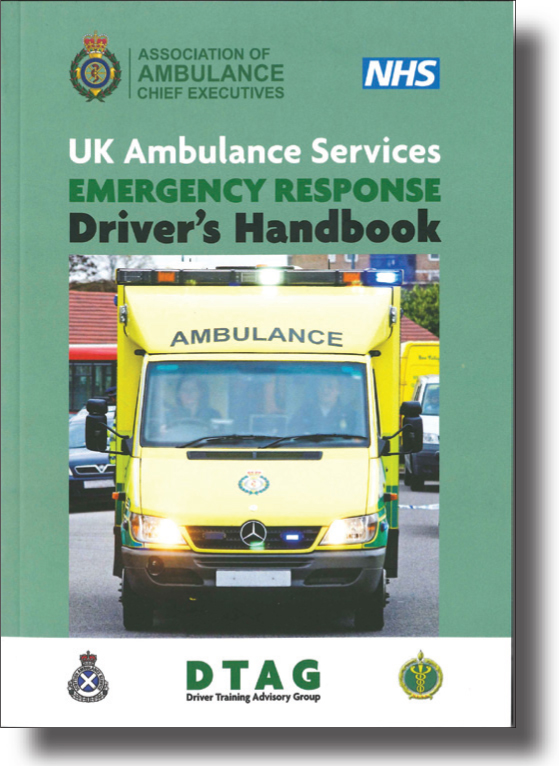
A familiar topic to kick-start the new year and as activity levels across ambulance services continue to be unrelenting, there are no shortage of opportunities to practise!
This has been written as a training reference by the ambulance services' Driver Training Advisory Group (DTAG)—an important distinction to make from the more widely known Highway Code. While this is a text written by ambulance services for, predominantly, ambulance service personnel, from the very first chapter repeated cross-referencing is made to statutory provision relating to road traffic law and emergency response driving in particular. A transparent, and welcome, approach taken by the DTAG as it helps to reinforce many of the principles advocated.
The content is predictably comprehensive, covering core topics such as legal exemptions, use of audible and visual warnings and driving at an appropriate speed, to more diverse matters such as eco driving. The appendices also contain some useful information, not least an excerpt from the Journal of Criminal Law by Mr Justice Blair in relation to calculating a vehicle's true speed—genuinely, an eye-opening piece. It certainly gave me pause for thought in an era where we are increasingly measured by the clock.
A debate has always accompanied the use of clinical guidelines, which many ambulance services have morphed into clinical protocols, but that ‘hot potato’ does not apply here. Accepting that a substantive chunk of this is specific to ambulance services, this is a robust, contemporary and in many instances, legally binding publication. One of the more informative texts I have been asked to review, although I should declare a minor conflict of interest here.
The chair of the DTAG, Paul Jones-Roberts, taught me how to emergency drive over a decade ago. I'm sure he doesn't remember me (unlikely) but I haven't forgotten the experience! A handbook such as this would have helped enormously. That is my excuse and I'm sticking to it.
I wish you all a prosperous, and peaceful, 2015.
